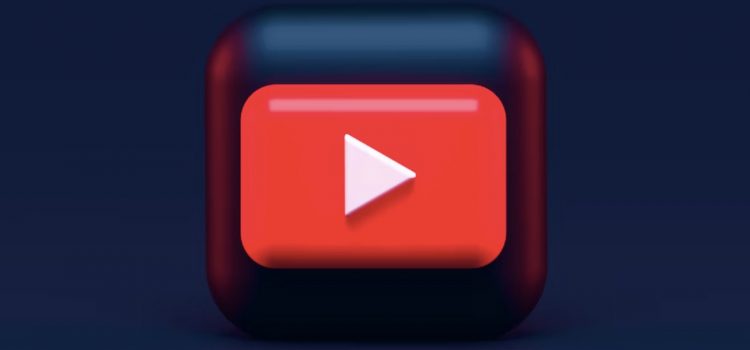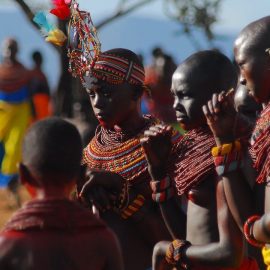

This article gives you a glimpse of what you can learn with Shortform. Shortform has the world’s best guides to 1000+ nonfiction books, plus other resources to help you accelerate your learning.
Want to learn faster and get smarter? Sign up for a free trial here .
Is YouTube considered social media? What qualifies as a social networking site?
YouTube is one of the most popular websites in the world. Launched in 2005, users can upload videos on their channel, including music videos, news clips, short films, vlogs, and more. Its other features such as stories, community posts, and YouTube Shorts make interactions between users much easier.
Let’s figure out if YouTube is social media by first looking at what qualifies as social media and if YouTube shares any of these features.
What Is Social Media?
When answering if YouTube is considered social media, we need to understand what exactly qualifies as social media. We’ll first look at the popular social media platforms as of 2022 and look at common features that they all share to determine if YouTube fits into these categories.
Here are just a few of the commonly used social media platforms, in no particular order:
- Snapchat
- TikTok
The earliest social media websites were LinkedIn, Friendster, and MySpace—the latter two being eclipsed by Facebook when it became one of the most popular social websites in 2007. Initially, social media was used for connecting with friends and family—or even people you had never met before—through posts. Since Instagram’s launch in 2010, sharing photos and videos have become popular ways of communicating with others and sharing your life online.
Many of these social media platforms share similar features that make sharing and connecting easier than ever. Here are just a few:
- Uploading text posts and/or photos
- “Stories” that expire after a certain amount of time (usually 24 hours)
- Like or love buttons on posts
- Tagging friends or followers
- “Follow” or “subscribe” options to stay updated on users
- Notifications that tell you when someone you’ve followed has uploaded
Under these criteria, YouTube is considered to be a social media platform—even though it may appear to be more similar to a streaming service on the surface.
Connecting With People on YouTube
Why do some people question if YouTube is considered social media? YouTube is most known for being a video site where users can upload videos to their channels that everyone can see. On the surface, it seems like there is no connection or sharing involved with viewers. But YouTube has become much more than what creators Chad Hurley, Steve Chen, and Jawed Karim intended it to be.
Many people’s careers rely on uploading videos to the website—those who upload regularly have been dubbed “YouTubers.” Some of these self-made entrepreneurs have even built empires by sharing videos and building audiences of millions, such as Rhett and Link (who own the entertainment company Mythical), MrBeast (a channel run by Jimmy Donaldson that has over 108 million subscribers as of October 2022), Smosh (a multi-million dollar channel turned company), and PewDiePie (a channel run by Felix Kjellberg that has over 110 million subscribers as of October 2022). All of these channels have one thing in common: their connections with their audiences, which is what social media is intended for.
One way YouTubers show their gratitude for their subscribers is to give them a fanbase name, such as PewDiePie’s “Bro Army” and Rhett and Link’s “Mythical Beasts.” Being a part of this group, and being addressed as such in YouTube videos, gives fans a sense of belonging and communal identity.
This is especially true for YouTubers who are “vloggers,”(video bloggers) who document their daily lives—such as going to the grocery store or sitting at home. The concept of vlogging is very similar to uploading a picture on Instagram or Facebook. On Instagram, uploading a photo at a party tells followers what you’ve been up to in your life. On YouTube, uploading a video of a party is doing the exact same thing. It’s just a longer and more interactive form of doing so.
Probably the most famous example of a vlogger is Casey Neistat, who vlogged his life for 534 days in a row, amassing a huge following. His vlogs sometimes show off extravagant adventures he’s been on, such as taking a flight worth $21,000 in his most viewed video. Other videos are much more personal, such as updating subscribers on his move from Los Angeles to New York City.
Other Social Media Features on YouTube
Aside from uploading a video and talking to an audience on YouTube, there are other features that the video platform shares with the likes of Facebook, Instagram, and Twitter. Below, we’ll look at the different features that YouTube has implemented on its website in the past few years to keep up with popular social media trends.
Likes (and Dislikes)
For years, YouTube was one of the only social websites that had a “dislike” button. The freedom of having a dislike button expressed how much audiences disliked certain videos—mostly music videos. For instance, some of the most disliked videos on YouTube were music videos featuring Justin Bieber, a pop singer that has received criticism over the years for various reasons. Another historically disliked video is “Friday” by Rebecca Black, who was bullied on the platform for years following the song’s release which was dubbed “the worst song ever.”
This all changed when YouTube removed the ability to see how many dislikes a video has in 2021 (YouTube still has a dislike button, but the number of dislikes is hidden). The public dislike count encouraged negativity and even cyberbullying, which there is enough of on social media already. The idea is that if no one can see the number of dislikes, then they aren’t encouraged to follow the trend of disliking something just because everyone else is. However, the decision to hide public dislikes has received backlash from smaller creators who feel targeted by higher corporates at YouTube who favor bigger channels with important brand deals. YouTube CEO Susan Wojcicki responded to the criticism saying the only intention behind removing public dislikes is to lessen the chance of creators receiving harmful “attacks” that are unwarranted.
You can still dislike videos, but it falls in line with how other social media platforms handle their “liking” feature. On Twitter and Instagram, you can only “heart” a post and it eliminates the choice of sharing your distaste for something on the website.
Community Posts & Handles
Videos aren’t the only way to engage with people on YouTube anymore. With community posts, YouTubers can write a text post to share their thoughts on certain events, direct subscribers to videos, or just say “Hi” to subscribers. Community posts can also include polls, GIFs, images, and short videos. Sound familiar? It’s because tweets on Twitter can basically do the same thing. The only downside to YouTube’s community posts is that a channel must have over 500 subscribers to gain access to the Community tab, which restricts smaller channels from engaging with their followers.
Most recently, YouTube launched @handles to drive traffic to users and easily identify channels. The handle is unique to your channel, unlike channel names which can be duplicated. This feature also makes it much easier to tag channels in comments and posts.
YouTube Shorts
A feature used by creators more recently is “Shorts.” Like TikTok videos and Instagram’s “Reels,” creators can upload videos to YouTube that are 60 seconds or less. The Shorts are often snippets from a creator’s newest video. YouTube Shorts have their own dedicated section that viewers can easily click on if they’re not in the mood for longer videos. Uploading clips from longer videos drives more traffic to the channel and to the longer videos, and are easier to share because they rarely need to be edited like a longer YouTube video would.
YouTube Shorts are undoubtedly influenced by TikTok’s popularity, which thrives on short-form content. They get to the point quickly and answer the questions, “Why should you watch my video?” or “Why should you subscribe to my channel?” It’s a smart way of hopping on trends to stay relevant and connect to subscribers easily.
While many YouTubers today are still as popular as they were a decade ago, they have to keep up with other social media trends to stay relevant. Many YouTubers from the early-to-mid 2010s generation are also burnt out from making regular long-form content. With Shorts, they have a compromising solution that will help them stay relevant with the new generation of social network users.
YouTube Stories
Another form of entertainment on YouTube that’s used to connect with audiences is YouTube Stories. First appearing as “YouTube Reels” on the platform, Stories are shortened videos that only channels with over 10,000 subscribers can create. They expire after seven days, rather than the widely-used 24-hour span.
Stories act as the most social media-friendly feature to date on YouTube. Viewers can directly comment on the video, to which the uploader can respond with a photo or video that anyone on the platform can see. Additionally, a thumbs up, thumbs down, and heart feature is available if viewers want to give a quick reaction.
How do YouTube Stories compare to other popular social media stories? The biggest difference is that Instagram and Snapchat’s stories disappear after 24 hours, versus YouTube Stories’ span of seven days. But one way they are similar is that you can easily find a channel’s story through your personal subscription feed, that way you won’t miss what your favorite YouTuber is posting about. Instagram and Snapchat are also known for their fun filters and the ability to “tag” other creators—which YouTube has adopted as well.
Making Money on YouTube
One of the biggest questions YouTubers often receive is how much money they earn making YouTube videos. In 2007, YouTube launched its Partner Program (YPP) which allows creators to earn revenue through advertising. In recent years, the restrictions of the program have been criticized for its monetization qualifications, but many people still rely on the program as their main source of income.
That being said, does earning money on YouTube take away from the connection creators build with their audiences? If so, is YouTube just a company people make money off of, or is it still a social media site that focuses more on sharing than building financial partnerships? Many people question if YouTubers are really just in it for the money or if they truly care about sharing their lives and connecting with subscribers. But if we look at how other social media platforms deal with financial partnerships, we can see that having a profitable YouTube career doesn’t change the fact that it’s still considered social media.
YouTube is arguably one of the first—if not the first—platforms that allowed people to make money on social media. Over time, other social media platforms hopped on the trend and allowed their users to do the same. TikTok has a creator fund program that allows users to receive funds based on their videos’ performances and is the social media site with the most opportunities to make money, according to many influencers. Instagram influencers don’t directly receive money from Instagram but have built a reputation on the photo-sharing platform to become brand ambassadors for a company. LinkedIn is the go-to website for making business decisions that will ultimately land you more revenue.
Essentially, social media isn’t just about sharing for the fun of it these days. Many people use these platforms to share their personalities and businesses to make money. Just because YouTube was one of the first websites that formed partnerships for monetization purposes doesn’t make it any less of a social media platform.
Why YouTube Is Social Media
Given everything we’ve examined about YouTube’s features, is YouTube considered social media? Yes, YouTube is considered to be a social media platform. Many websites that list the most popular social media platforms often list YouTube in their rankings, to which the video site appears as the second most popular behind Facebook. Additionally, YouTube shares many of the features that are common across other social media platforms.
YouTube is a platform that was created for people to engage with each other. It’s the essence of what social networking is all about, and YouTube is one of the biggest representations of that.
Do you use YouTube as a social media platform? If so, comment below how you connect with others on YouTube!

Want to fast-track your learning? With Shortform, you’ll gain insights you won't find anywhere else .
Here's what you’ll get when you sign up for Shortform :
- Complicated ideas explained in simple and concise ways
- Smart analysis that connects what you’re reading to other key concepts
- Writing with zero fluff because we know how important your time is






